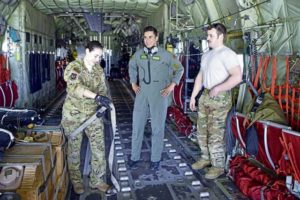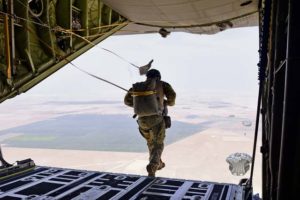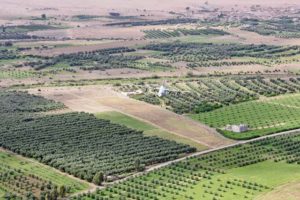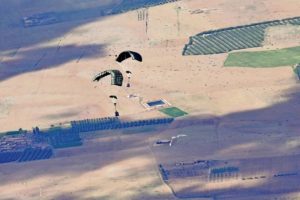
Story and photos by
Airman 1st Class Milton Hamilton
86th Airlift Wing Public Affairs
As the annual exercise African Lion 2019 wraps up, approximately 1,100 U.S. service members prepare to redeploy out of the Kingdom of Morocco and Tunisia.
Exercise African Lion 19 is a combined, multilateral exercise with aim to improve interoperability and mutual understanding of each nation’s tactics, while demonstrating the strong bond between their militaries.
For this exercise, the U.S. joined armed forces from several other countries including Canada, France, Morocco, Senegal, Spain, Tunisia, and the United Kingdom. Each of the four U.S. armed branches participated in the exercise, to include U.S. Airmen from Ramstein. The 37th Airlift Squadron, the 86th Logistics Readiness Squadron, the 86th Aircraft Maintenance Squadron, and the 435th Air Ground Operations Wing helped support the aviation training exercise portion of African Lion 2019 along the Moroccan coastline.
During the two-week exercise, U.S. armed forces personnel along with the Royal Moroccan Armed Forces operated out of a number of locations, to include Kenitra Air Base, Morocco. There, the Airmen conducted extensive training, including approximately 120 flying hours, low-level mountain flying, aeromedical evacuation training, 122 joint-personnel drops, 102 static line jumps, and 24 low-cost, low-altitude parachute drops.
“We did a low-cost, low-altitude drop, something that can absolutely be done here,” said Capt. Luke Walker, a 37th AS pilot and African Lion 2019 deputy mission commander. “It was windy, but they were very impressed that we only used a small crew, a pilot, co-pilot and two loadmasters, but still were able to hit our point of impact without a navigator.”
Walker said the 37th AS contributed to one of the exercises’ main objectives of countering violent-extremist organizations by training hand-to-hand with the Royal Moroccan Armed Forces on military freefalls; high-altitude, low-opening operations; and the low-cost ways to do airdrops to resupply their forces.
The 37th AS also conducted dirt-landing zones to help train the Royal Moroccan military on how to insert and extract their teams, while also being able to resupply their forces with heavier equipment that can’t be airdropped.
“This is training that we can’t get back at Ramstein very easily, so it’s great for us,” said Walker. “Our crew gets to train, while also working with Moroccan forces to see how well we can operate in a tactical environment.”
This iteration of African Lion was a year of firsts: the first time Royal Moroccan military personnel conducted free-fall operations onboard a U.S. aircraft; the first time the 86th Aeromedical Evacuation Squadron conducted contested scenarios in the U.S. Africa Command; and the first time Royal Moroccan medical personnel conducted medical scenarios on board a U.S. aircraft during a flight.
“Last year was the first time we came to this exercise, but we were only able to table talk and show off our static displays,” said Capt. Sara Hidinger, an 86th AES flight nurse. “This year we were actually able to put the Royal Moroccan medical personnel on a U.S. plane. I was floored at how well they were able to jump into any medical scenario. We were able to build a great relationship with our medical counterparts.” Though the U.S. and Royal Moroccan armed forces aimed to sharpen their own individual skills by training in unfamiliar settings, the main objective was to strengthen relations and for each nation to successfully operate in conjunction with one another.
“The Moroccans are a very capable partner and the more we get to practice our operations together, the greater we build our partnership capacity,” said Capt. Joshua Kelsey, a 37th AS pilot and African Lion 2019 mission commander. While African Lion 2019 enabled the training of U.S., Moroccan, Tunisian and other allied and partner forces, it was also reinforced lessons learned from past African Lion exercises and provided a foundation and structure for future military cooperation and engagements.
“It’s an absolute benefit for us,” said Kelsey. “We get to exercise ourselves in a way that we don’t get to do locally. Coming here to Morocco is unique in and of itself.”
Kelsey said that African Lion 2019 was a success and he looks forward to integrating with the Royal Moroccan forces next year.










